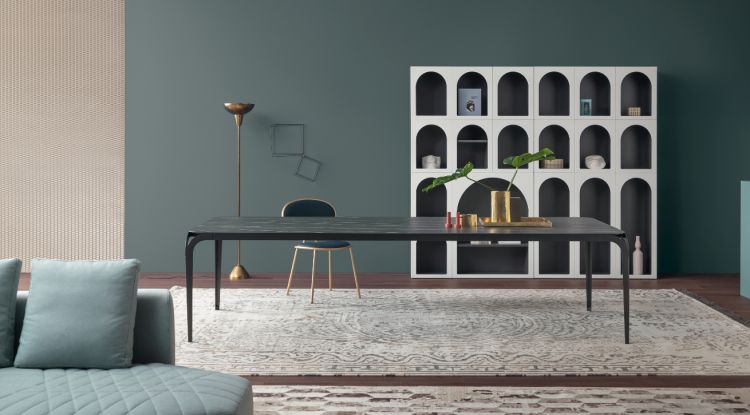26 May 2022
WHEN THE TABLE SETS THE STYLE
Table and chairs have always been the central elements of home furnishing.
This is why the aesthetic and functional evolution of these two furnishing elements has made them fundamental in conceiving different spaces in the same house: the living area, the kitchen and the outdoor area.
And it is precisely on the table that we carry out the main activities that characterise our daily lives: we eat, chat, study, play and, lately, work. In short, we live most of our day around it, especially those dedicated to conviviality.
The evolution of lifestyles has also influenced the use of the table, which with the advent of open spaces has found absolute centrality in the home, becoming more and more the protagonist.
If you are looking for a table, you can find the right one for you in one of the following four main groups:
- DESIGN TABLES
- MINIMALIST TABLES
- TECHNICAL-FUNCTIONAL TABLES
- FURNITURE OR SCULPTURE TABLES
The family of DESIGN tables includes all those extraordinary furnishing elements that over the years have made "Made in Italy" great throughout the world. The architects and designers who have created these tables bear illustrious names that, in many cases, are part of Italian history and style. In this important category, the most commonly used materials are wood, glass, iron, stone, marble and, to a lesser extent, synthetic materials. They are stylistically recognisable and therefore considered prestigious, becoming status symbols.
MINIMAL tables take their inspiration from the Nordic design tradition, particularly Swedish design. They are most often made of light-coloured woods such as maple, beech or birch, combined with white painted metal frames with very thin sections. The curved plywood very often enriches the object itself, and they are also easily recognisable and easy to place objects for those who like an essential, rigorous and clean style.
The TECHNICAL-FUNCTIONAL tables include furnishing complements where functionality, dimensions and materials are all attributable to domestic use and preference is given to use over aesthetics. The extendable table is, in fact, still in great demand and finds its place both in kitchens and in living rooms with not particularly large spaces. The structure is often made of wood or metal to facilitate the use of extension mechanisms. The tops, on the other hand, are made of laminate, HPL, glass, stone or porcelain stoneware. In any case, in this category, the solidity of the tops and the robustness of the extension mechanisms are preferred.
FURNITURE TABLES, also known as SCULPTURE TABLES, are part of that very important family of tables that combine design, aesthetics, functionality and prestige. They are usually characterised by important and recognisable bases, have important dimensions and are made in a multitude of materials. Again, wood, metal, glass, stone and porcelain stoneware are the most commonly used materials in both the structure and the tops. Their uniqueness makes them very interesting for both the national and international markets and they are certainly destined to become increasingly interesting in interior design.

